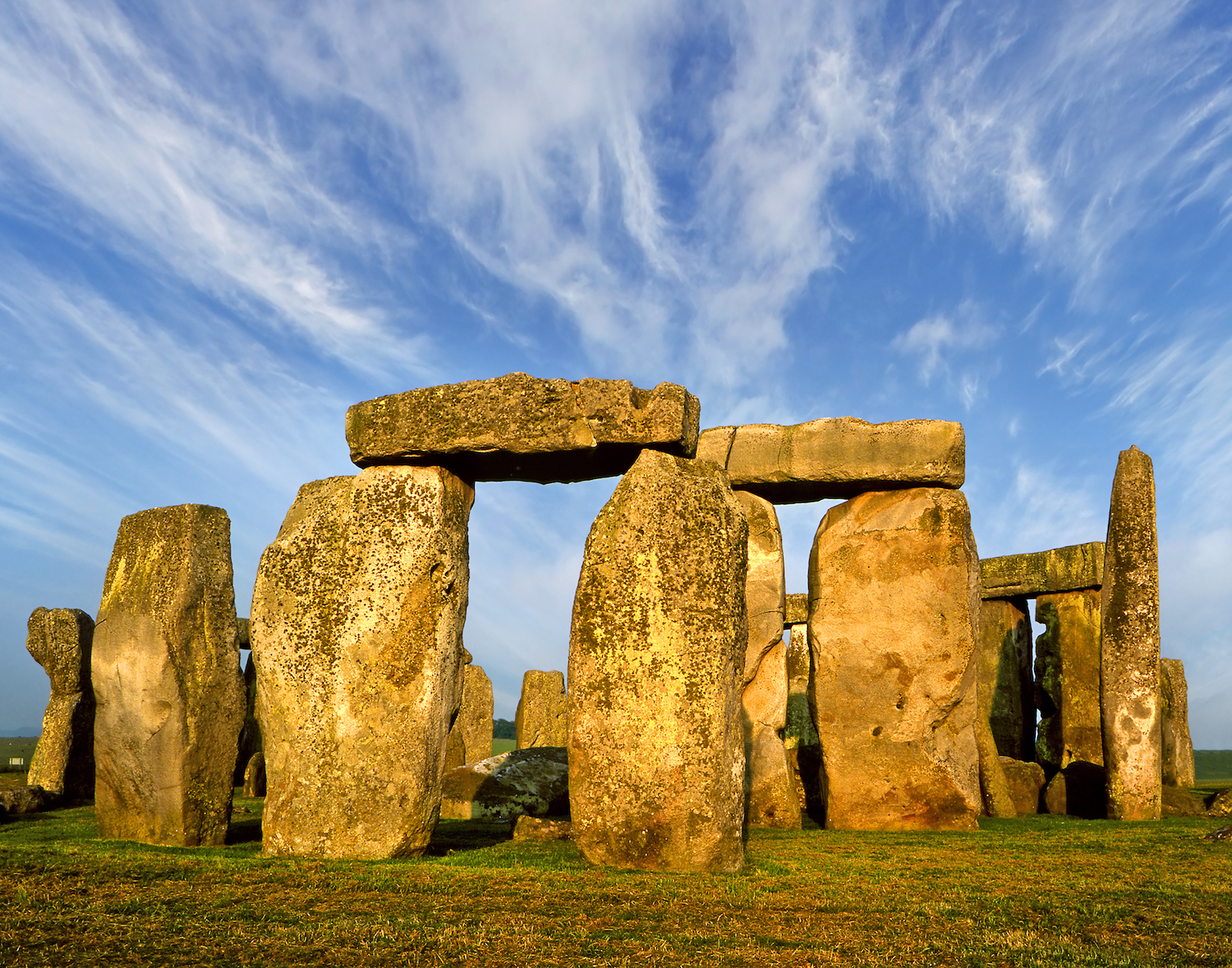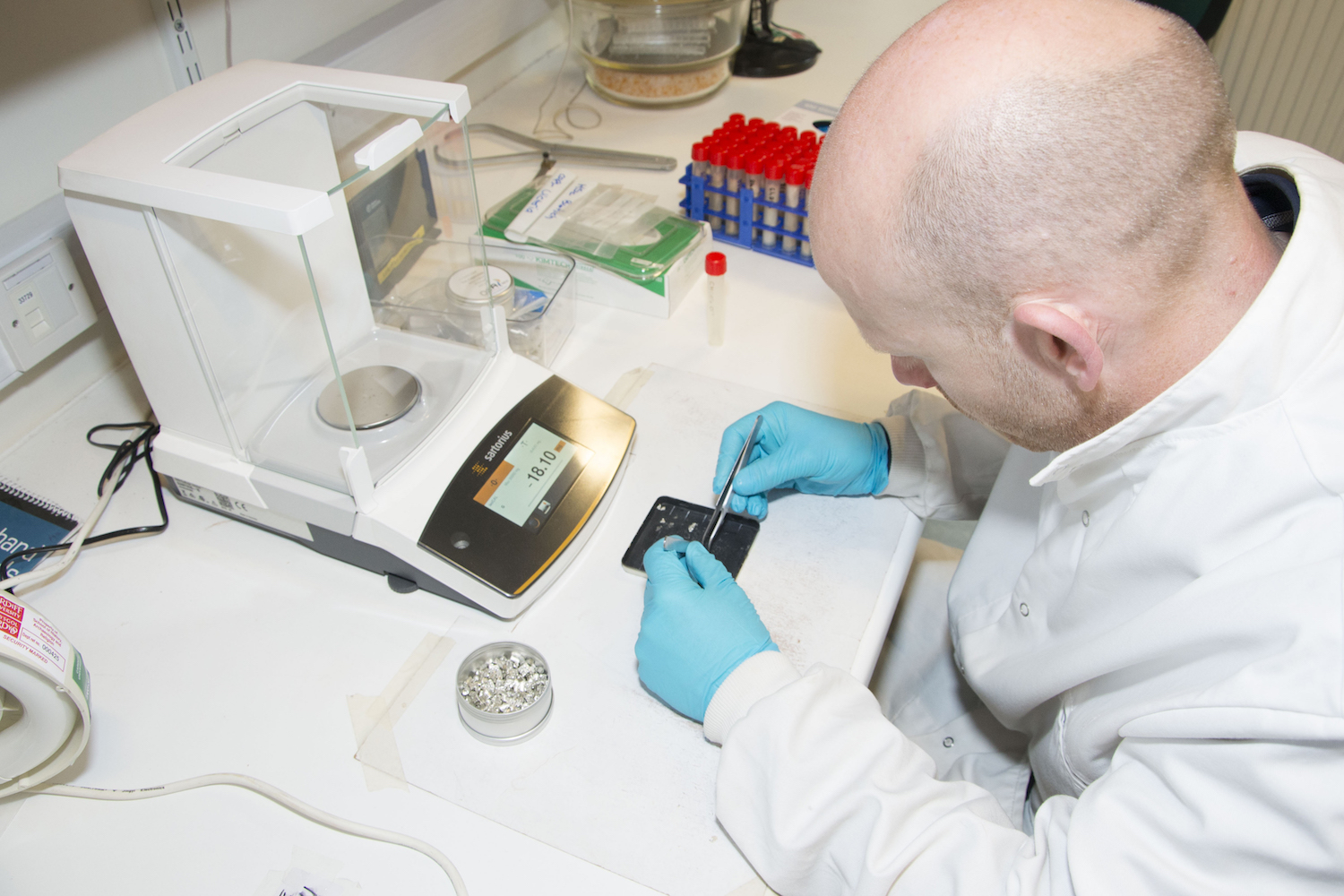Ancient Stonehenge Pigs Had Long Journey Before Their Slaughter
Countless piggies likely trotted hundreds of miles to Stonehenge and other ancient monuments during the Neolithic, where they were promptly devoured during giant feasts, a new study finds.
After guzzling down the succulent pork, ancient people threw the porcine remains aside, littering the landscape with pig skulls and bones. Now, 2,800 years later, researchers have collected jaw and tooth samples from the remains of 131 of these Neolithic pigs; from the samples, they analyzed the isotopes (an element that has a different number of neutrons than usual in its nucleus) that hint at the animals' origins.
The isotopic results suggest that some of the piggies traveled hundreds of miles, coming from places as far away as modern-day Scotland, northeast England and western Wales, the researchers found. [Stonehenge Photos: Investigating How the Mysterious Structure Was Built]
Indeed, the isotopic values had a "staggering range" and came from all over the United Kingdom, said study lead researcher Richard Madgwick, a lecturer in archaeological science at Cardiff University in the United Kingdom.
If these pigs are a good proxy for the humans who ate them, then it's likely that Neolithic people also traveled hundreds of miles from all over Britain to attend annual, momentous feasts at these sacred sites, Madgwick said.

This piggy went to market …
Stonehenge is hardly the only henge — a term that refers to circular prehistoric monuments made out of wood or stone. While the pig remains weren't found right at Stonehenge, they were found close by, about 1.8 miles (3 kilometers) away at another henge known as Durrington Walls.
Pigs were also on the menu at three other U.K. Neolithic sites, dating back about 2,800 to 2,400 years: Mount Pleasant, a henge enclosure near the coast by Dorset; West Kennet Palisade Enclosures, which has the world's largest prehistoric stone circles; and Marden, a henge encompassing 35 acres (14 hectares).
Sign up for the Live Science daily newsletter now
Get the world’s most fascinating discoveries delivered straight to your inbox.
Pigs were the meat du jour during the late Neolithic. In fact, "This is the pig age," Madgwick told Live Science. "This is the only age where pigs are the number one domestic species."
These pigs may help answer a long-standing question over who built and used Stonehenge. The local food and water an animal consumes contain unique isotopes, and these isotopes end up in the animal's bones and teeth.
As luck would have it, it's easier to tell where pigs came from than it is humans, Madgwick said. Human teeth develop slowly, and if the human moved around a lot, it can be hard to pinpoint where the person came from. In contrast, pigs are "not very mobile animals, and their teeth develop really rapidly," Madgwick said. So, Madgwick and his colleagues looked at five different isotopes in the 131 recovered pigs: Strontium gave a geological signal, sulfur gave clues related to coastal proximity, oxygen gave a climatic signal, and carbon and nitrogen gave dietary signals.

This was no small undertaking. "This is the largest published multi-isotopes study using five systems," Madgwick said. Granted, these isotopes don't give a precise zip code of where the pigs originated, "but we are getting closer to where they're more likely to come from," he said. [Photos of 'Hybridized' Animal Sacrifices from Ancient England]
Are pigs good proxies?
The nuance of the study: "Unquestionably, the biggest risk in this study was, 'Are pigs a good proxy?'" Madgwick said. "Because pigs are not good for moving. Ask any pig farmer and they will tell you that even moving a pig a couple hundred yards is a challenge."
But several clues suggest that the pigs were moved — perhaps by trotting or by boat — from their birthplaces to the Neolithic monuments, where they were then slaughtered. For instance, many pig skulls — which are heavy and have little meat — were found at these Neolithic monuments. So, if people were merely transporting slaughtered pig meat, it wouldn't make sense for them to bring the skulls, too, Madgwick said. Moreover, there's no evidence of salt production during this period, and though Neolithic people may have smoked the pork, the meat would have likely spoiled during the long journey, he said.
Rather, it's likely that these pigs were somehow coaxed to move, and then fattened up along the way before reaching the ultimate henge destination, Madgwick said.
Sites like Durrington Walls could have hosted as many as 4,000 people at one time, so clearly, there was a need for pork, come mealtime. It's possible that these people came to build Stonehenge and to celebrate rituals, such as the midwinter solstice. "So, they're working all day on the stones and partying all night on the pig feast," Madgwick said.
"For me, it confirmed people and animals were coming from all over the place to Stonehenge and to the surroundings of Stonehenge," said Christophe Snoeck, a researcher in the Analytical, Environmental & Geo-Chemistry unit at Vrije Universiteit Brussel, in Belgium, who was not involved with the research. These findings support a study Snoeck and his colleagues published in 2018, showing that some of the cremated people found buried at Stonehenge weren't locals, but had come from Wales, the origin of some of Stonehenge's megaliths.
"People moved around the landscape, they were not just restricted to the Stonehenge environment," Snoeck told Live Science. "This study really shows this even further than the one we did last year."
The study was published online today (March 13) in the journal Science Advances.
- In Photos: A Walk Through Stonehenge
- In Photos: Massive Stone Complex Discovered in Kazakhstan
- The 5 Smartest Non-Primates on the Planet
Originally published on Live Science.

Laura is the archaeology and Life's Little Mysteries editor at Live Science. She also reports on general science, including paleontology. Her work has appeared in The New York Times, Scholastic, Popular Science and Spectrum, a site on autism research. She has won multiple awards from the Society of Professional Journalists and the Washington Newspaper Publishers Association for her reporting at a weekly newspaper near Seattle. Laura holds a bachelor's degree in English literature and psychology from Washington University in St. Louis and a master's degree in science writing from NYU.










